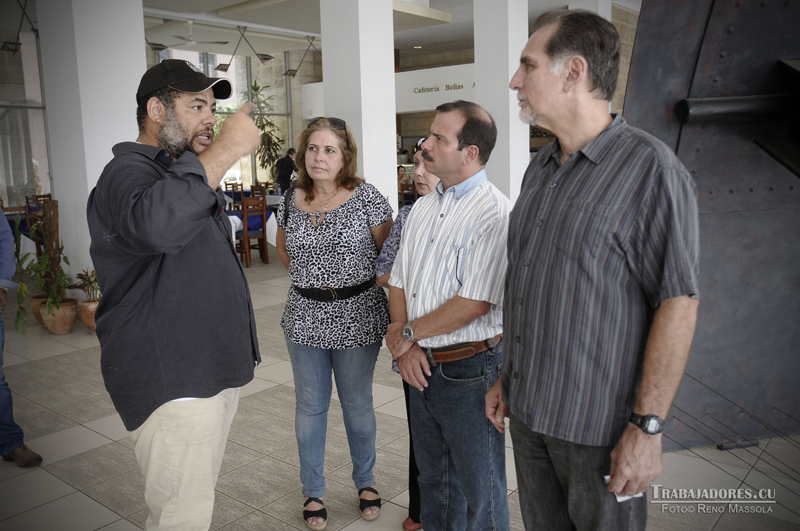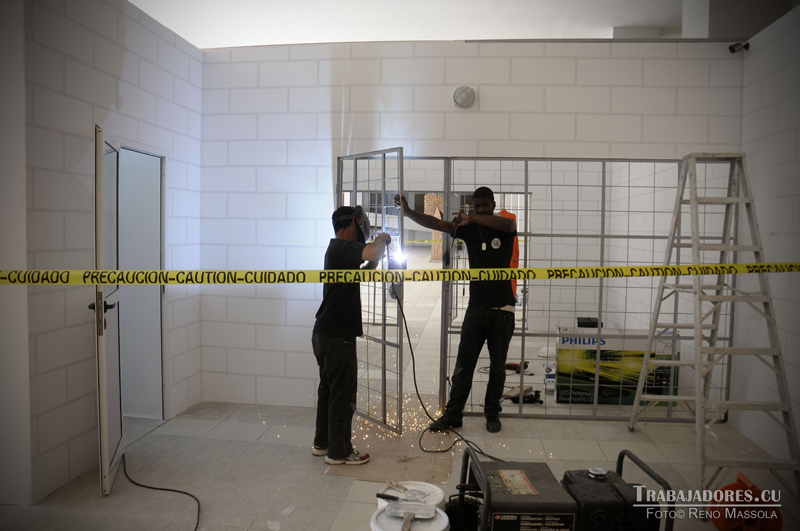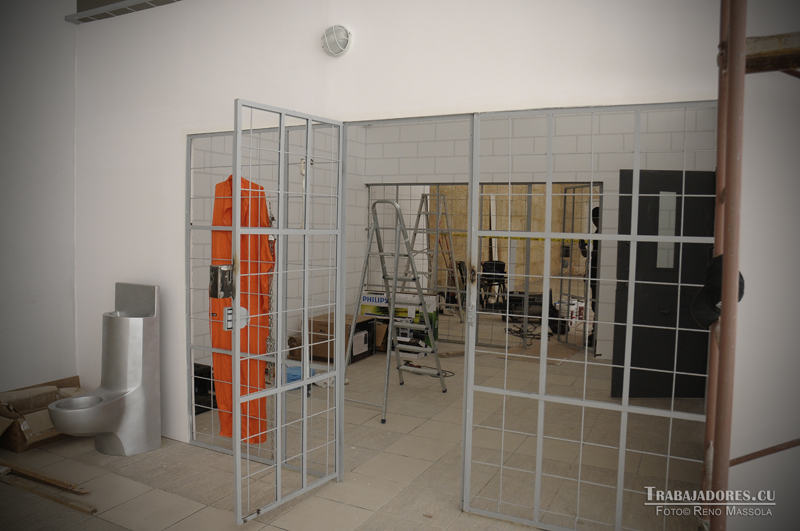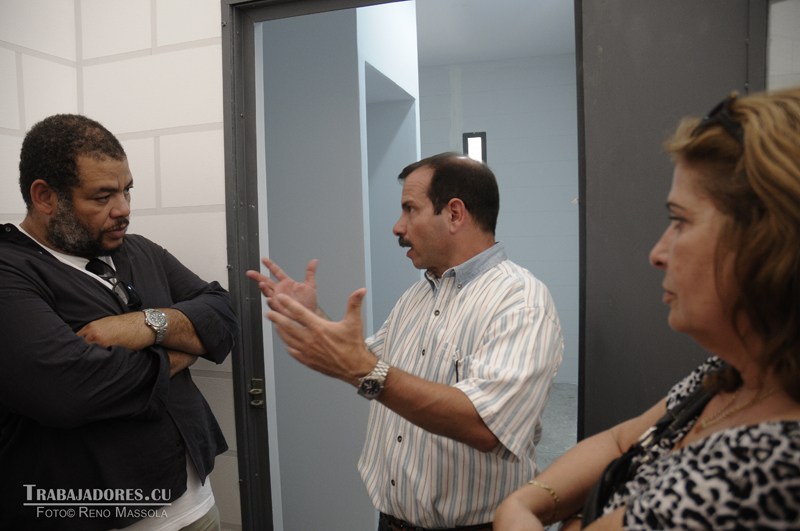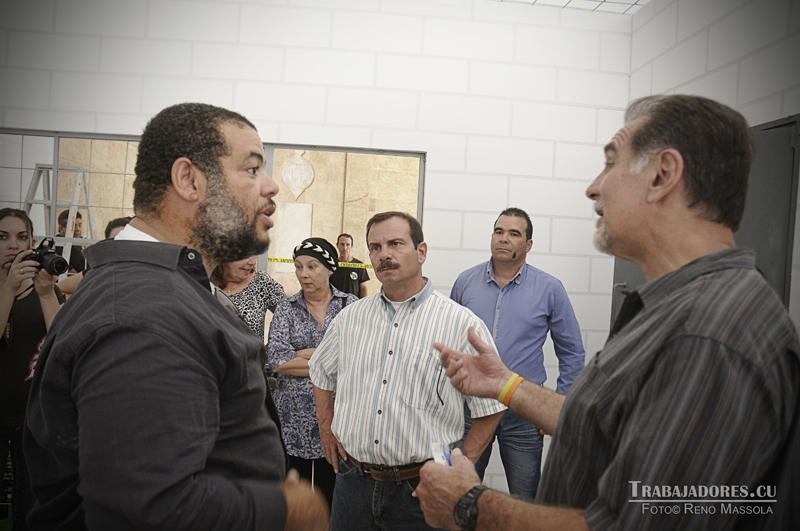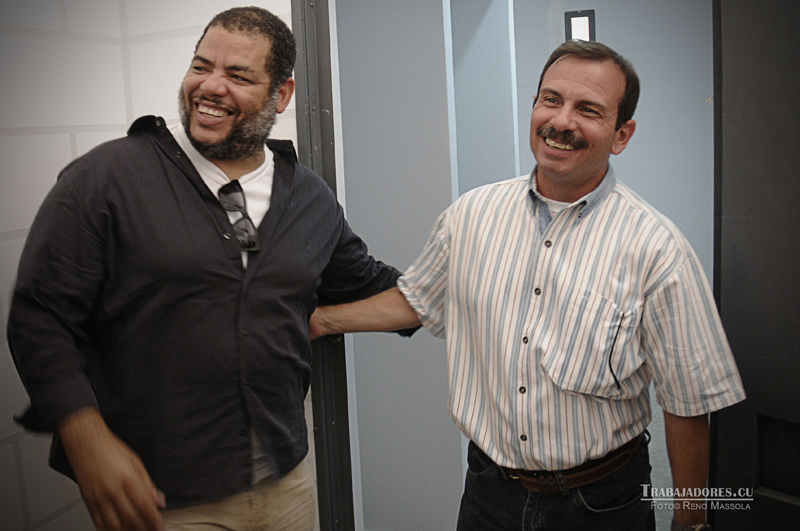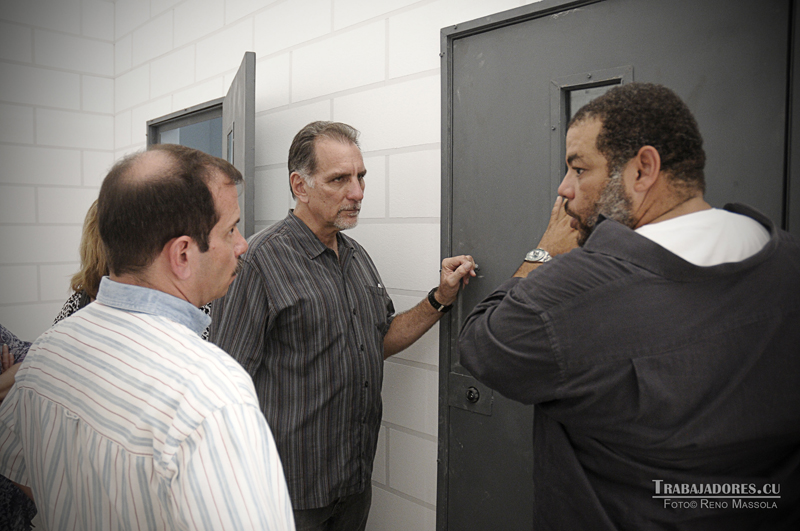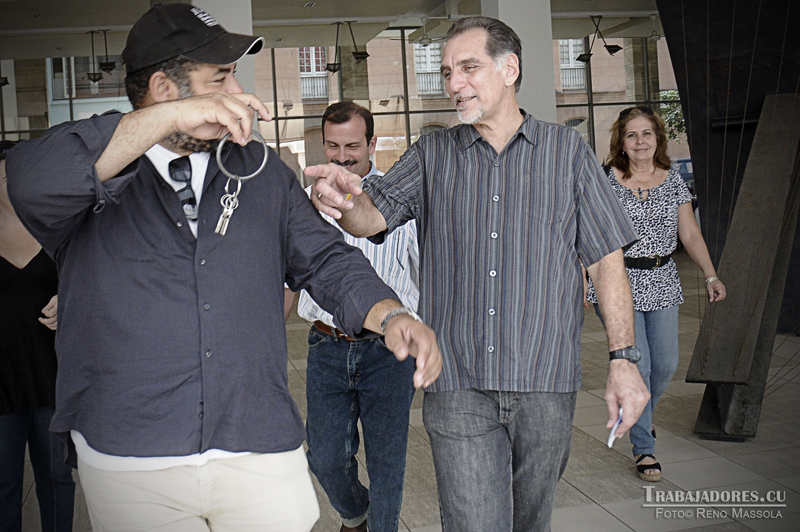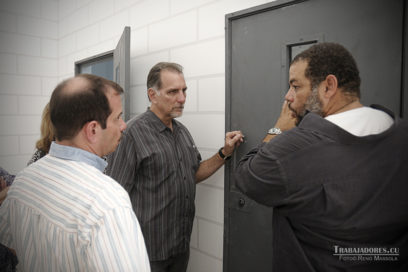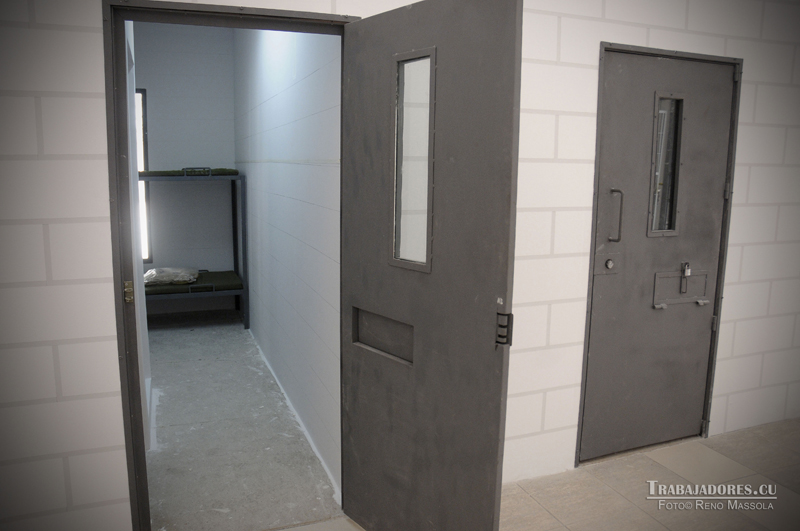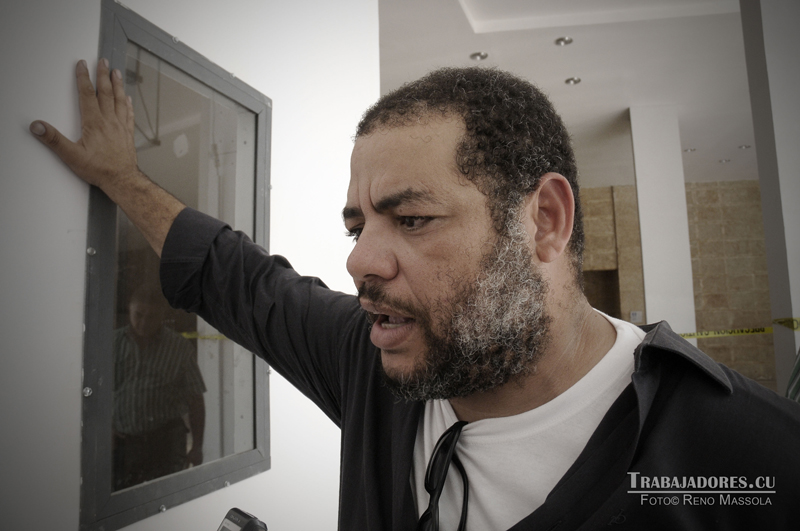
- Kcho: “Silence is bad, people dislike lack of communication, and then they make documentaries about people like that of the National Geographic Channel where human suffering appears as if it were of a lion in Serengeti, Africa. Photos: René Pérez Massola
The National Museum of fine Arts will son exhibit the installation: No agradezcan el silencio (Do not thank the silence), by the famed Cuban artist Alexys Leyva Machado known worldwide as Kcho.
The experience came from the experience lived by the Cuban Five Heroes in the Special House Unit known as The Hole in the Federal Detention Center in Miami, where they were for 17 months, despite the regulations for prisoners in the United States (U.S.) reduces to 60 days the maximum time of punishment.

- Kcho: “I feel people will visit the exhibition spontaneously and that the majority will like to live the complete experience, including that of the cell that will be optional. Anyhow, those who enter the facility will feel, since the first time, the inconvenience to be in a controlled space, locked, inside bars and padlocks. That is the idea.”
Thanks to this new proposal by Kcho, visitors will discover one of the thorniest problems of the American penitentiary system. People will experience five minutes of imprisonment, if they want, in a cell of 15 feet long and seven feet wide, with no more furniture than an iron litter with a thin mattress, a table and a chair made of concrete. The toilet is made of metal, the washbowl and the mirror that show your sad glance.
Those are conditions created to make people feel like waste, to degrade them to the minimum expression, said Rene Gonzalez and Fernando Gonzalez to the artist in a meeting held at “the construction site” on Wednesday, March 19, when they visited Kcho working on the cell.
Kcho investigated the topic in detail, but testimonies of the anti-terrorist fighters that have returned to Cuba as well as the paintings by Antonio Guerrero were vital for the realism that highlights the piece.
“This is going to be like a great black bucket- Kcho said-, covered by a black curtain half transparent, so that you could see something, but part of it will be hidden. There will be orange dungarees with the name and the sentence of each of the Cuban Five printed on the back.”
Those that would like to experience it should take off all the clothes and wear one of the uniforms including the sandals. From that moment on, the person will receive the similar treatment of those sentenced to The Hole received, including handcuffs and feet chained, as well as the called “walk” when they are taken out of the cell.
The work also includes a hall (like a cell too) for transitory exhibitions and a small classroom with writing desks where some of the audio visuals done about the topic of the antiterrorist fighters during 15 years of struggle for their release will be screened.
“But it is not only for the Cuban five- said Kcho to Trabajadores newspaper -, it is also for the Puerto Ricans and all political prisoner fighters who have faced the empire. It is also to criticize the system that has turned the prisons a lucrative and cynical business. They need the criminals who they suppose are in need to educate.
